
A nursery rhyme is a traditional poem or song for children in Britain and other European countries, but usage of the term dates only from the late 18th/early 19th century. The term Mother Goose rhymes is interchangeable with nursery rhymes.
"Twinkle, Twinkle, Little Star" is an English lullaby. The lyrics are from an early-19th-century English poem written by Jane Taylor, "The Star". The poem, which is in couplet form, was first published in 1806 in Rhymes for the Nursery, a collection of poems by Taylor and her sister Ann. It is now sung to the tune of the French melody "Ah! vous dirai-je, maman", which was first published in 1761 and later arranged by several composers, including Mozart with Twelve Variations on "Ah vous dirai-je, Maman". The English lyrics have five stanzas, although only the first is widely known.

"Little Bo-Peep" or "Little Bo-Peep has lost her sheep" is a popular English language nursery rhyme. It has a Roud Folk Song Index number of 6487.

Sarah Josepha Buell Hale was an American writer, activist, and editor of the most widely circulated magazine in the period before the Civil War, Godey's Lady's Book. She was the author of the nursery rhyme "Mary Had a Little Lamb". Hale famously campaigned for the creation of the American holiday known as Thanksgiving, and for the completion of the Bunker Hill Monument.

"Ladybird, Ladybird" is the first line of an English-language nursery rhyme that also has German analogues. It is included in the Roud Folk Song Index as number of 16215.
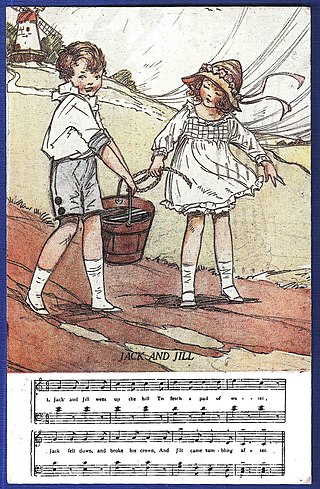
"Jack and Jill" is a traditional English nursery rhyme. The Roud Folk Song Index classifies the commonest tune and its variations as number 10266, although it has been set to several others. The original rhyme dates back to the 18th century and different numbers of verses were later added, each with variations in the wording. Throughout the 19th century new versions of the story were written featuring different incidents. A number of theories continue to be advanced to explain the rhyme's historical origin.

"The Man in the Moon Stayed Up Too Late" is J. R. R. Tolkien's imagined original song behind the nursery rhyme "Hey Diddle Diddle ", invented by back-formation. It was first published in Yorkshire Poetry magazine in 1923, and was reused in extended form in the 1954–55 The Lord of the Rings as a song sung by Frodo Baggins in the Prancing Pony inn. The extended version was republished in the 1962 collection The Adventures of Tom Bombadil.

"Old Mother Hubbard" is an English-language nursery rhyme, first given an extended printing in 1805, although the exact origin of the rhyme is disputed. It has a Roud Folk Song Index number of 19334. After a notable nursery success, it was eventually adapted to a large variety of practical and entertaining uses.
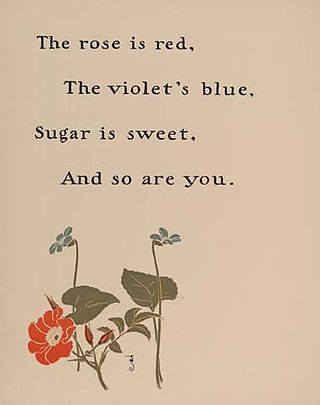
"Roses Are Red" is the name of a love poem and children's rhyme with Roud Folk Song Index number 19798. It has become a cliché for Valentine's Day, and has spawned multiple humorous and parodic variants.

"The Lamb" is a poem by William Blake, published in Songs of Innocence in 1789.
A children's song may be a nursery rhyme set to music, a song that children invent and share among themselves or a modern creation intended for entertainment, use in the home or education. Although children's songs have been recorded and studied in some cultures more than others, they appear to be universal in human society.
Nationality words link to articles with information on the nation's poetry or literature.

"Little Orphant Annie" is an 1885 poem written by James Whitcomb Riley and published by the Bobbs-Merrill Company. First titled "The Elf Child", the name was changed by Riley to "Little Orphant Allie" at its third printing; however, a typesetting error during printing renamed the poem to its current form. Known as the "Hoosier poet", Riley wrote the rhymes in 19th-century Hoosier dialect. As one of his most well known poems, it served as the inspiration for the comic strip Little Orphan Annie, which itself inspired a Broadway musical, several films, and many radio and television programs.
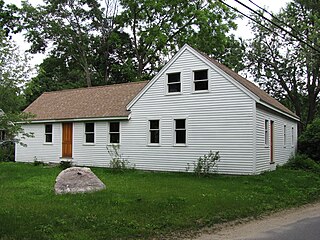
The Sawyer Homestead was a historic house at 108 Maple Street in Sterling, Massachusetts. With an estimated construction date of 1756, the house was one of Sterling's oldest surviving structures, before it was destroyed by an arsonist in 2007. It was also notable as the birthplace of Mary Sawyer, who alleged she was the subject of the American children's nursery rhyme "Mary Had a Little Lamb". The house was listed on the National Register of Historic Places in 2000. The Sawyer family, whose descendants still own the property, have had a reproduction of the house built on its site.

The Wayside Inn Historic District is a historic district on Old Boston Post Road in Sudbury, Massachusetts. The district contains the Wayside Inn, a historic landmark that is one of the oldest inns in the country, operating as Howe's Tavern in 1716. The district features Greek Revival and American colonial architecture. The area was added to the National Register of Historic Places in 1973.
Liberia; or, Mr. Peyton's Experiments is an 1853 novel by Sarah Josepha Hale, the author of the nursery rhyme "Mary Had a Little Lamb", who wrote the novel under the name of Sara J. Hale.
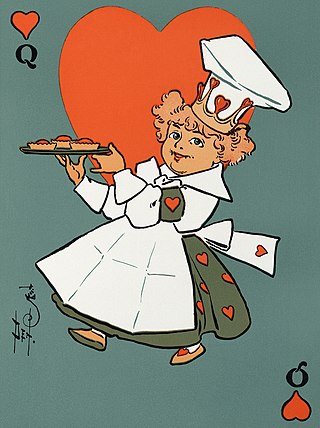
"The Queen of Hearts" is an English poem and nursery rhyme based on the characters found on playing cards, by an anonymous author, originally published with three lesser-known stanzas, "The King of Spades", "The King of Clubs", and "The Diamond King", in the British publication The European Magazine, vol. 1, no. 4, in April 1782. However, Iona and Peter Opie have argued that there is evidence to suggest that these other stanzas were later additions to an older poem.

Two Souls in One is the debut album by American saxophonist George Braith recorded in 1963 and released on the Blue Note label.
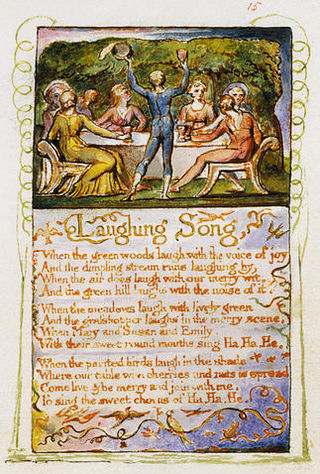
"Laughing Song" is a poem published in 1789 by the English poet William Blake. This poem is one of nineteen in Blake's collection Songs of Innocence.

Mary Tyler was an American woman who is believed to have been the "Mary" on which the nursery rhyme "Mary Had a Little Lamb" was based, a claim she stated at the age of 70. The authorship of the nursery rhyme itself is also in doubt.

















